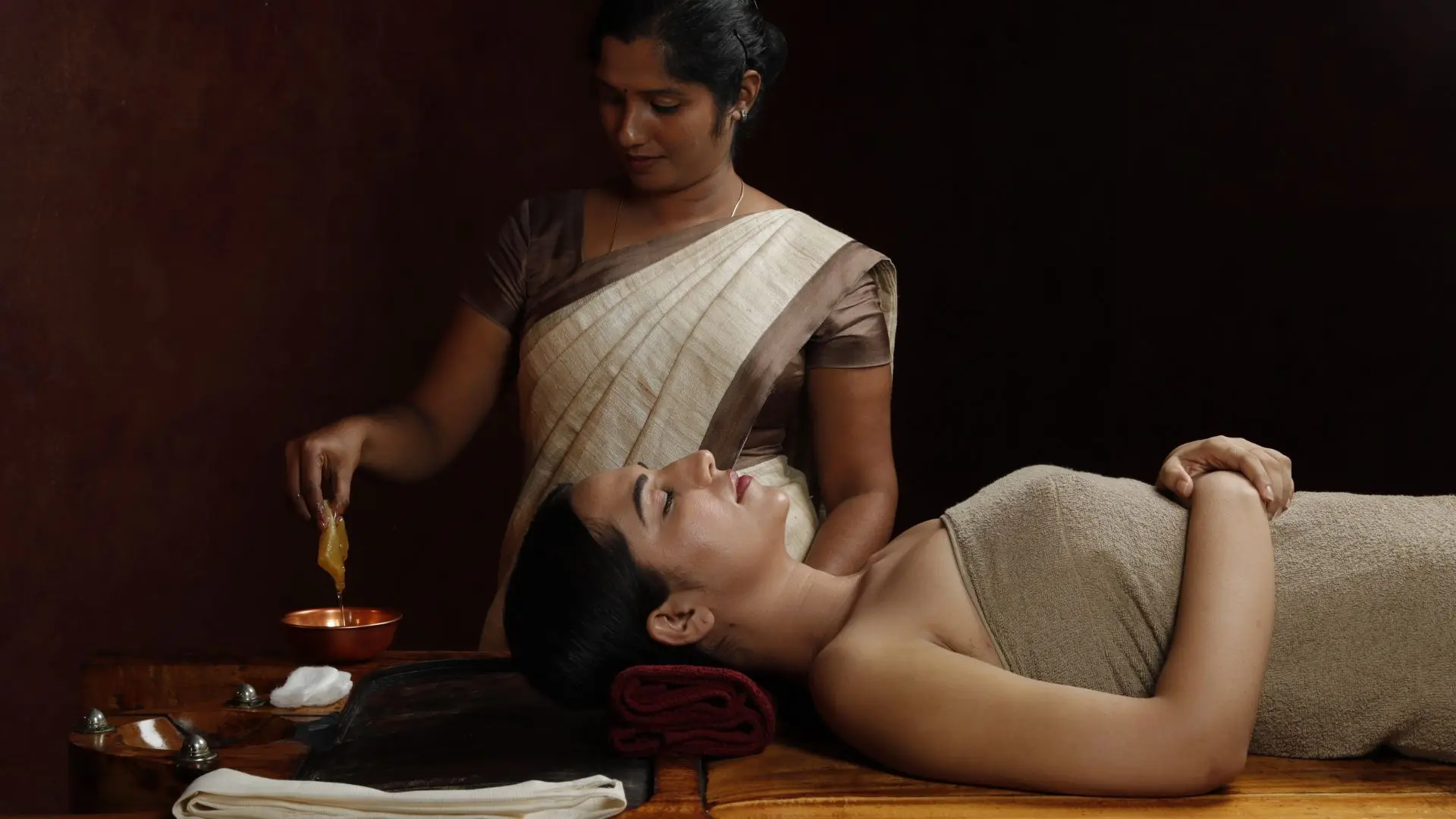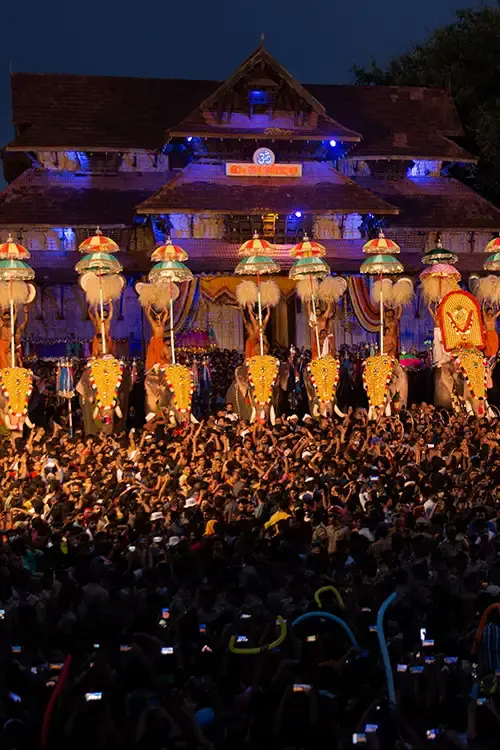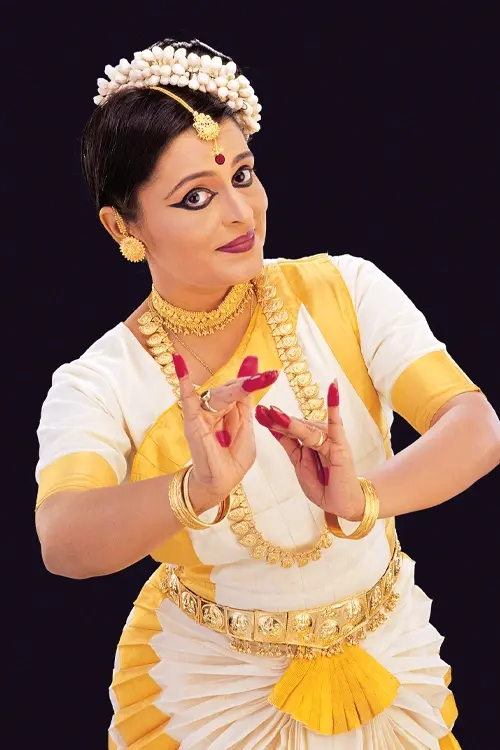Enchanting Kerala
Chavittunatakam
A colourful and vigorous theatre form of Kerala, popular among the Christian communities of Kodungallur, Chavittunatakam is noted for its rhythmic high-stepping, elaborate costumes, detailed gestures and well-defined body movements of the characters presented in tune with the rhythmic playback music and complementary percussion.
Literally Chavittunatakam means 'Stamping Drama' for the predominant feature is the artist's stamping the floor with great force. With exaggerated gestures and loud songs sung by themselves the actors stamp the wooden stage. Played in the coastal regions of Kerala it originated among the Latin Catholics in the early phase of Portuguese colonization. The names of two 17th century scholars Chinnathampi Pillai and Vedanayakam Pillai are often associated with the invention of this art form. This marvelous music-drama flaunts the brilliant blend of cultures by incorporating Indian dance movements with western operatic style of presentation.
Heroic tales from the Christian lore are usually adopted as themes which are presented with a large number of characters all in glittering medieval operatic dress. The rhythmic movements are supported by dialogues which bear the tinge of an archaic Tamil. The cast is all male and requires vigorous training. The master is known by the name of Annavi.
Bell and drums are the chief instruments for background score. Open stages are usually chosen as venues for the performance but sometimes the performance is shifted to the interiors of churches. Some of the most popular plays in Chavittunatakam are Carelman Charitham (Charlemagne the Great), Brijeena Charitham (Life of Queen Brijeena), Marthoma Sandesam (Message of St. Thomas), St. Sebastian, Daveedhum Goliyathum (David and Goliath), Mahanaya Alexander (Alexander the Great) and Veerayodhakkalude Anthyam (Death of Great warriors).






